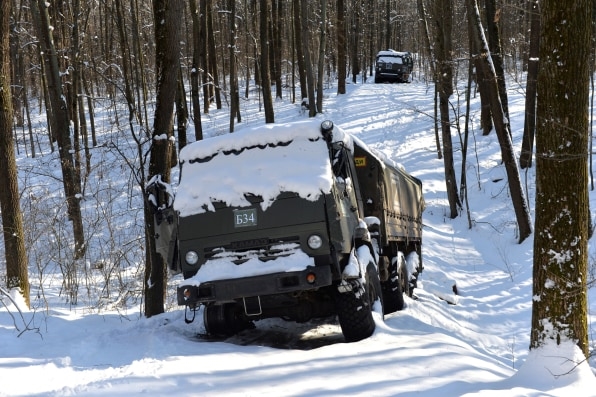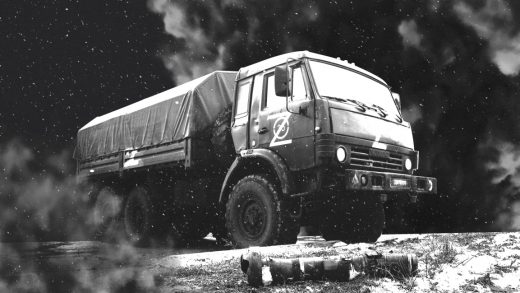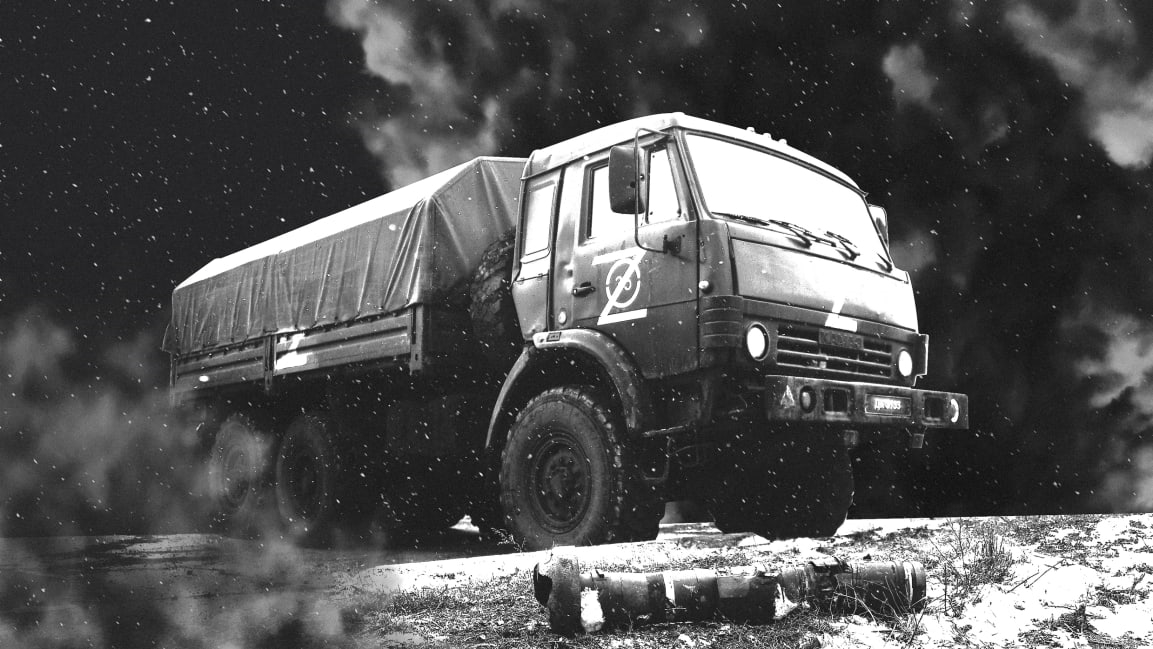How Russia botched the invasion of northern Ukraine, in one simple chart
Russia has retreated from its invasion of northern Ukraine and the city of Kyiv, leaving a staggering trail of civilian casualties in its wake. But Russia is still entrenched in the eastern Donbas region of Ukraine, where it’s vying for control of the entire route to Crimea in the south, which it claimed in 2014.
Why is Russia succeeding in the east and not in the north? A big part of the answer lies in the supply chain. And you can get a better idea of what that means in a data visualization at the Washington Post, which demonstrates how a single Russian soldier requires 440 pounds of supplies per day—supplies that need to make their way from the Russian border into Ukraine.
Four-hundred forty pounds is a lot, and a majority of that weight appears to be in fuel. As we reported a month ago, Russia’s terrifying lines of tanks require continuous resupply. The gas mileage of a tank is around 0.3 miles per gallon—and it’s just one of many vehicles that make up a typical battalion tactical group (which consists of nearly 1,000 soldiers along with equipment).
The Washington Post breaks down the battalion in a staggering illustration: 10 tanks, six armored personnel carriers, 40 armored infantry fighting vehicles, as many as 20 artillery vehicles, 10 air defense vehicles. And then about a dozen food, water, and medical trucks.
Another dozen fuel trucks provide fuel to the group, which might seem substantial on paper, but they can provide just two days of fuel to the gas-sucking convoy. By comparison, three food trucks can feed up to 900 soldiers for nearly two weeks. It’s a point you might lose in the otherwise sharp Washington Post graphics, seen above, if you don’t read them closely enough.
When placed into the context of navigating over bombed bridges and through narrow roads—the latter of which is necessary because Ukraine’s infamous spring mud can swallow even treaded vehicles—you start to understand how flawed these long battalion lines are. Support trucks need to constantly ferry supplies up and down a line that’s being bombarded by Ukrainian ambushes. When vehicles break down, they block roads—and more than 2,000 Russian vehicles are reported to have broken down to date.

[Photo: Sergey Bobok/AFP/Getty Images]
How could Russia possibly sustain all this? It couldn’t. And the obviousness of this error has led analysts to debate whether Putin’s invasion of the north was a mistake or a feint to distract the world from his actual goal—not to conquer Ukraine, but to reclaim the resource rich areas in the south and east, namely, the gas and oil reserves of the Donbas region, Crimea, and the Black Sea. Even as Russia has verbally agreed to peace with Ukraine, its condition is the continued control of Crimea.
In the eastern part of Ukraine, where Russia still holds on strong, the country is resupplying itself by railroads. (Russia couldn’t claim railroad hubs in the north due to that mud, according to the Washington Post). Moving any freight by train is four times more efficient than on roads, plus vehicles moved by rail aren’t going to break down as often.
Russian forces were able to leverage rail in their siege on Mariupol, and one can’t help but wonder what might have happened to the northern city of Kyiv if Russia had been able to duplicate that strategy in the north.
Fast Company , Read Full Story
(47)



